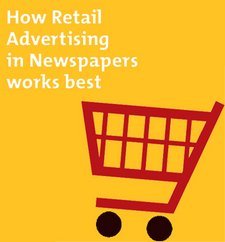 The newspaper industry has for many years said that newspapers are an effective advertising medium. Now, for the first time, the industry has the quantitative evidence to prove it.
The newspaper industry has for many years said that newspapers are an effective advertising medium. Now, for the first time, the industry has the quantitative evidence to prove it.
The Newspaper Works today launched a new advertising effectiveness metric designed specifically for the unique attributes of newspapers and to measure the impact of advertising in newspapers. The metric is not only an Australian first, it is unique in the world.
Developed in conjunction with research company Ipsos Media CT, the effectiveness metric has been put to its first test on retail advertising in newspapers. The How Retail Advertising in Newspapers Works Best creative benchmarking report is the first in a series of effectiveness reports that The Newspaper Works will release this year.
“Newspapers are putting their money where their mouths are. For years newspaper sales reps have pounded the pavement claiming newspapers are effective. Now they have the proof,” The Newspaper Works CEO Tony Hale said.
“Newspapers generate $1.2 billion of retail revenue annually, which represents almost 30 per cent of all newspaper advertising revenue. We need to improve the understanding of how advertisers can use newspapers effectively and also to improve the standard of creative. This metric allows us to do both these things in a compelling way and allows it to be used as the industry standard.”
The effectiveness metric can be used for in-depth case studies to isolate the role of newspapers in a multimedia campaign along with creative benchmarking.
For the Retail report, Ipsos tested a total of 36 retail ads among nearly 2,500 respondents across Australia, with over 7,000 advertising observations collected and more than 100 observations for each ad recorded.
The findings also demonstrate that many retail advertisers are harnessing the power of newspapers to also effectively build their brands and leverage their television campaigns with the addition of newspapers.
The report researched a number of randomly selected retail ads and found clear winners and losers.
Among the key findings were:
* ALDI and Ikea were the clear winners, not only performing well as retail ads, but also helping to build their brands, scoring the best on both brand equity impact* and brand affinity measures.
* Woolworths clearly outperformed Coles ads on ad recognition and brand linkage.
* David Jones’ Megan Gale ads outperformed ads by Myer featuring Jennifer Hawkins, on ad recognition and brand linkage
* ‘Cluttered’ ads for Bunnings, Dan Murphy’s and Officeworks also ranked well on ad recognition, brand linkage and brand equity impact, plus Call to Action
* Qantas’ retail-style ads were highly recognisable and delivered on both a retail and brand level.
* Many successful retailers built a strong link between TV and newspaper ad campaigns including David Jones, Bunnings, Woolworths, Jetstar and Target.
“There’s never been a more important time for newspapers to demonstrate their influence than in the current economic climate, when advertisers are rightfully demanding even greater accountability and return on investment,” Hale said.
“In the past, the newspaper industry has been somewhat disadvantaged as the quantitative metrics that have been widely accepted by the marketing and advertising community have been largely developed with television in mind. So The Newspaper Works has worked with Ipsos to develop, for the first time, an advertising effectiveness metric specifically designed for newspapers.”
The Retail Report is the first in a series of newspaper ad effectiveness studies that The Newspaper Works is undertaking during 2009. They will include in-market case studies that isolate the effectiveness of newspapers from other media; newspaper creative benchmarking and category “deep dives” to see how newspapers influence purchase behaviour.
*Brand equity impact included measures such as ‘ad improved my familiarity and understanding of the brand’, ‘ad made brand appropriate’ and ‘ad made brand seem different’.



